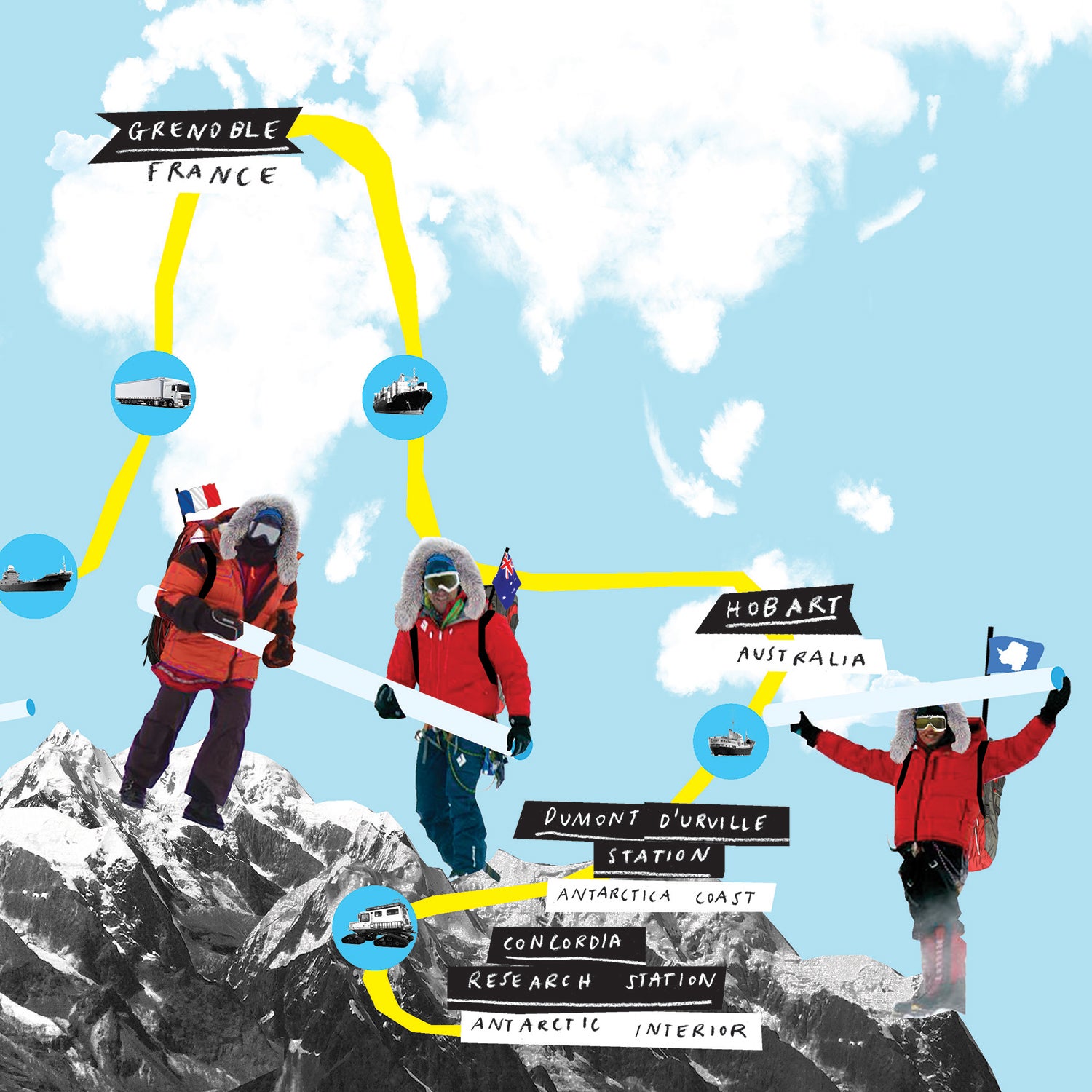Microscopic air bubbles inside glaciers can be read like the rings of a tree, providing climate data going back thousands of years. But as the world’s , researchers are scrambling to preserve that data before it’s gone forever. Two years ago, a coalition of European universities and researchers founded , a group assembled to extract multiple ice cores from some of the planet’s most vulnerable high-mountain glaciers. The scientists will study a single core from each site and store the rest in Antarctica for future testing.
Last summer, Ice Memory researchers pulled three cores from Mont Blanc that could prove invaluable for understanding how climate change, pollution, and even diseases like the Black Death have affected Europe. The group’s next venture, which at press time was on track to be completed in June, is even more daunting: they’ll climb 21,102-foot Bolivian peak Illimani and drill data out of its glacier, one of the Andes’s most threatened. The 15 scientists on the two-month expedition must be proficient in highaltitude climbing and able to work around the clock. “You can’t do this kind of research if you’re not a mountaineer,” says Ice Memory cofounder , an engineer with the .
Here’s how they’ll pull it off.
The Mountain
The site of the mysterious Eastern Air Lines plane crash in the 1980s, Illimani is a massif of three 20,000-foot peaks. The team will acclimatize around La Paz for three weeks before moving to the drill site, a few hundred feet below the summit.
The Ascent
Thirty local porters and guides will haul more than two tons of equipment, including a specially designed ice drill, nearly 6,000 feet up from base camp. Just below the drill site is Stairway to Heaven, a roughly 60-degree pitch where fixed ropes are mandatory.
The Site
Located at 20,670 feet, the drill site is on a flat glacial expanse between two peaks. Though it’s important to work as fast as possible to limit time at elevation, the 15-person crew will require 15 days of continuous drilling to extract the samples.
The Drill
Designed for highaltitude operation by , of Columbus, Ohio, the drilling system weighs 176 pounds and breaks into eight pieces for transport. Fully assembled, it stands nearly 12 feet tall and can extract cores as deep as 820 feet.
The Cores
Just under four inches in diameter, the three 475-foot cores will be cut into one-meter, 15-pound logs to ease transport and storage. Insulated boxes are too heavy to carry up the mountain, so the cores will be stored in a snow cave until porters can bring them to base camp in cardboard sleeves.
The Descent
Transporting 5,500 pounds of ice down the mountain must be done at night to minimize melting. Each trip will take about five hours, and with a maximum load of four segments per porter, the descents will require nearly two weeks to complete.
The Cold Chain
A series of refrigerated vehicles and storage facilities links the Andes drill site to the research lab in Grenoble, France, and the ice cores’ final home in a snow vault in Antarctica—a 24,000-mile journey. The cores won’t reach their destination until at least 2021. If the chain fails at any stage, the data in those cores will be lost.


